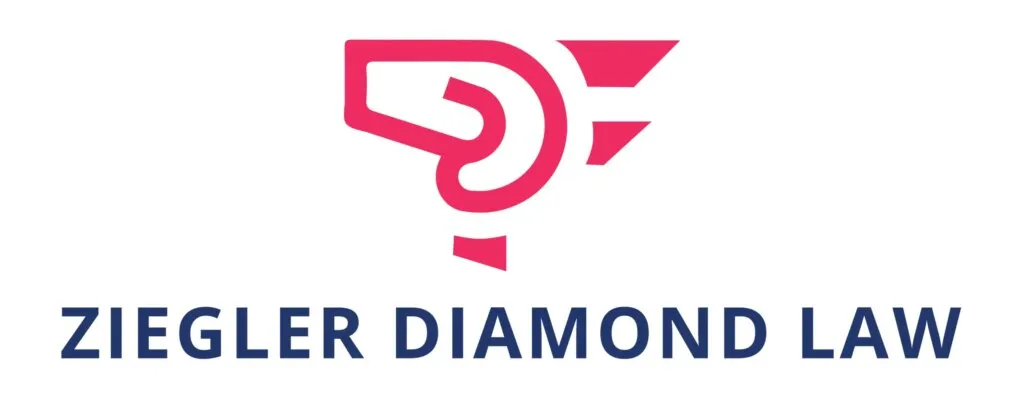Are you overwhelmed by credit card debt and considering bankruptcy as a way out? You’re not alone. Filing for bankruptcy can be a daunting decision, but it might be the solution you need to regain control of your financial life. In this blog post, we will explore the relationship between bankruptcy and credit card debt, discuss “can you file bankruptcy on credit cards only”, and examine alternatives to bankruptcy for managing your credit card debt. We’ll also provide guidance on preparing for bankruptcy and rebuilding your credit after the process is complete. Get ready to embark on a journey towards financial freedom and a debt-free future.
Key Takeaways
- Understanding bankruptcy and credit card debt is essential for obtaining relief.
- Filing bankruptcy on credit cards only is possible, but all debts must be included in the filing to take full advantage of the process.
- Alternatives to bankruptcy include debt settlement, management plans, and balance transfer cards. Rebuilding financial stability requires creating a budget and monitoring your credit report.
Understanding Bankruptcy and Credit Card Debt
Bankruptcy is a legal process designed to provide relief to those struggling with unmanageable debt, including credit card debt, which is one of the most common types of unsecured debts to be eliminated in bankruptcy. Filing for bankruptcy can put an end to creditor harassment and provide a much-needed respite from excessive credit card payments. However, grasping the various types of bankruptcy for credit card debt relief, and the contrast between unsecured and secured debt, is necessary.

Types of Bankruptcy for Credit Card Debt
Chapter 7 and Chapter 13 are the two types of bankruptcy available for credit card debt relief. Chapter 7 bankruptcy, also known as liquidation bankruptcy, is designed to eliminate credit card debt and other unsecured debt by selling non-exempt assets to pay off creditors. Unsecured consumer debts like credit card debt and medical costs may be credit card debt discharged within a few months after filing for Chapter 7 bankruptcy. However, certain types of debts, such as alimony, child support, and recent tax debt, are ineligible for discharge in Chapter 7 bankruptcy.
Chapter 13 bankruptcy, on the other hand, is referred to as “reorganization” and prioritizes unsecured debt, such as credit card bills, very lowly in the reorganization plan. In this type of bankruptcy, you’ll enter a repayment plan, typically lasting three to five years, to pay off your debts. Upon successful completion of the repayment plan, any remaining qualifying debt will be discharged. However, if you fail to make the required Chapter 13 payments, your bankruptcy case may be dismissed, leaving you liable for any existing credit card payments.
Unsecured vs. Secured Debt
Credit card debt is a prime example of unsecured debt, which is a type of debt that is not backed by collateral. Unsecured debts, like credit card bills, medical bills, and personal loans, are often discharged in bankruptcy proceedings because there’s no security interest or collateral attached to them.
In contrast, secured debt, like mortgages and car loans, is backed by collateral, such as a house or car, that the lender can repossess if the borrower fails to meet their repayment obligations. In bankruptcy, secured debts are treated differently than unsecured credit card debts, and the collateral may be at risk of repossession if the borrower can’t keep up with the payments.
Recognizing the distinction between unsecured and secured debt plays a pivotal role when contemplating bankruptcy for relief from credit card debt.
Can You File Bankruptcy on Credit Cards Only?
Though filing bankruptcy focused only on credit card debt is possible, incorporating all your debts in the bankruptcy filing is a must, not just the credit card debt. Evaluating your financial position, consulting a bankruptcy attorney, and acquiring credit counseling should occur prior to deciding on bankruptcy.
Bankruptcy may be a feasible route for those battling credit card debt, but it’s crucial to investigate other options before finalizing a decision. Debt settlement, debt management plans, and balance transfer credit cards are all potential alternatives to bankruptcy for credit card debt.

Including All Debts in Bankruptcy
When filing for bankruptcy, it’s imperative to include all of your credit card bills and other obligations in the filing. This ensures that all of your eligible debts are discharged, and you can truly start fresh after the bankruptcy process. Some debts, like child support, alimony, and certain unpaid taxes, cannot be discharged through bankruptcy, but it’s still essential to include them in the filing to receive the full benefits of the bankruptcy process.
Incorporating all debts in the bankruptcy filing helps dodge possible repercussions, like non-dischargeable debts or lawsuits from creditors trying to recover unpaid debts. Consulting with a bankruptcy attorney can help ensure that all debts are included and that you fully understand the implications of filing bankruptcy on credit cards and other debts.
Consequences of Excluding Debts
Attempting to exclude certain debts from a bankruptcy filing can lead to multiple consequences. For example, non-dischargeable debts like child support, alimony, and unpaid taxes will not be eliminated in bankruptcy and will still require payment even after the bankruptcy case is completed.
Moreover, omitting debts from bankruptcy may leave you exposed to legal actions from creditors attempting to collect the unpaid debts. While the bankruptcy process is in progress, creditors are generally forbidden from initiating or continuing lawsuits, wage garnishments, or making collection calls. Therefore, it is essential to include all debts in the bankruptcy filing to ensure that you receive the full benefits of the bankruptcy process and avoid potential legal actions from creditors.
Alternatives to Bankruptcy for Credit Card Debt
Bankruptcy may not always be the best solution for managing credit card debt. It’s important to explore alternative debt relief options before deciding to file for bankruptcy. Some of these alternatives include debt settlement, debt management plans, and balance transfer credit cards. By investigating these alternatives, you may find a more suitable solution to your financial situation that allows you to avoid the long-term consequences of bankruptcy.
Understanding the advantages and disadvantages of each alternative debt relief option can help you make an informed decision about which route is best for your financial situation. Keep in mind that while these options may provide temporary relief, they may not fully address the root cause of your debt. It’s essential to develop a long-term plan to manage your finances and avoid future debt problems.

Debt Settlement
Debt settlement is a process in which you or a debt settlement company negotiates with your creditors to reduce the total amount of your credit card bills owed. This can be an attractive option for those who have a large amount of unsecured debt and are unable to keep up with their monthly payments, as opposed to opting for debt consolidation.
However, there are some drawbacks to debt settlement. Here are some things to consider:
- It can have a negative impact on your credit score
- Creditors may not always agree to settle your credit card bills
- Debt settlement companies may charge hefty fees for their services
Considering the advantages and disadvantages of debt settlement is vital before determining if it’s the appropriate solution for your financial circumstances.
Debt Management Plans
A debt management plan is a payment arrangement that helps you repay your credit card payments over a designated period. In a debt management plan, you work with a credit counseling agency to:
- Evaluate your financial situation
- Develop a plan that’s suitable for you
- Negotiate with your creditors on your behalf to lower interest rates and waive fees for your credit card bills.
Debt management plans can be a helpful alternative to bankruptcy for those struggling with credit card debt, as they can reduce monthly payments, lower interest rates, and waive fees. However, keep in mind, enrolling in a debt management plan necessitates a dedication to regular payments and adhering to a budget.
Balance Transfer Credit Cards
A balance transfer credit card is a type of credit card that allows you to:
- Transfer your high-interest credit card debts to a new card with a reduced interest rate, potentially lowering your credit card bill
- Save money on interest charges
- Make it easier to pay off your debt.
However, there are some potential risks associated with balance transfer credit cards. If you don’t pay off the balance before the introductory period expires, you may end up with a higher balance than the initial amount. Additionally, it’s important to review the terms and conditions of the card, as balance transfer fees may apply. Be sure to weigh the benefits and risks of balance transfer credit cards before deciding if this option is right for you.
Preparing for Bankruptcy: Important Considerations
If bankruptcy seems like the suitable choice for your financial situation, proper preparation for the process is of paramount importance. This includes assessing your financial situation, consulting with a bankruptcy attorney, and participating in credit counseling. Taking these steps will help ensure that you have a clear understanding of the bankruptcy process and can make informed decisions about how to proceed.
Through meticulous preparation for bankruptcy, you can enhance the likelihood of a positive outcome and reduce the enduring impacts on your credit and financial balance. Remember, bankruptcy is a powerful tool for overcoming debt, but it’s essential to approach the process with care and diligence.
Assessing Your Financial Situation
Prior to filing for bankruptcy, assessing your income, expenses, assets, and debts is necessary to decide if it’s the correct choice for you. This includes analyzing your financial statements, calculating and analyzing financial ratios, and assessing your goals and objectives.
By gaining a clear understanding of your financial situation, you can make an informed decision about whether bankruptcy is the best option for you. It’s also important to consider your long-term financial sustainability, including factors such as savings, investments, and retirement planning.
Consulting with a Bankruptcy Attorney
Seeking professional advice from a bankruptcy attorney is crucial to understanding the bankruptcy process and potential outcomes. A bankruptcy attorney can provide guidance on the different types of bankruptcy available to you, as well as the potential consequences of filing for bankruptcy. Additionally, a bankruptcy trustee plays a significant role in managing the bankruptcy case.
It’s important to consult with a bankruptcy attorney as early as possible in the process to ensure that you understand your options and can make informed decisions about your financial future. You can find a bankruptcy attorney by searching online, asking for referrals from friends and family, or contacting your local bar association.
Credit Counseling
Before filing for bankruptcy, you must complete mandatory credit counseling within 180 days of filing. Credit counseling can provide valuable information on budgeting, managing debt, and other financial topics that can help you better understand your financial situation and explore alternative debt relief options.
Participating in credit counseling with a credit counselor can provide several benefits:
- It is a requirement for filing bankruptcy.
- It can help you gain a better understanding of your financial situation.
- It can teach you how to manage your finances effectively.
- It can improve your financial stability.
- It can help you avoid future debt problems.
Life After Bankruptcy: Rebuilding Credit and Financial Stability
Bankruptcy can provide a fresh start for those struggling with credit card debt, but it’s important to remember that rebuilding your credit and achieving financial stability after bankruptcy will require time and effort. By establishing a budget, using secured credit cards responsibly, and monitoring your credit report, you can begin to rebuild your credit and regain control of your financial life.
Developing a long-term strategy for managing your finances and sidestepping future debt issues is crucial. With dedication and persistence, you can overcome the challenges of bankruptcy and create a brighter financial future for yourself and your family.
Establishing a Budget
Formulating and adhering to a budget is vital for managing your expenses and preventing future debt post-bankruptcy. A well-structured budget can help you prioritize your spending, ensure that your expenses don’t exceed your income, and set aside money for savings and financial goals.
To create a budget, follow these steps:
- Take into account your income, expenses, debt, savings, and financial goals.
- Prioritize your expenses.
- Track your spending.
- Adjust your budget as needed to ensure that you’re staying on track and making progress towards your financial goals.
Secured Credit Cards
Responsible usage of secured credit cards can aid in rebuilding your credit post-bankruptcy. Here’s how:
- Get a secured credit card that requires a cash deposit as collateral.
- Use the card to make small purchases and pay off the balance in full and on time each month.
- Keep your account balances low to demonstrate responsible credit utilization.
- Monitor your credit score regularly to track your progress and see improvements over time.
By following these steps, you can create a positive credit history and improve your credit score.
When selecting a secured credit card, look for one issued by a major credit card company with a low and stable interest rate, a grace period of at least 28 days, and no annual or sign-up fees. It’s essential to use secured credit cards responsibly, making payments on time, maintaining low balances, and refraining from unnecessary purchases.
Monitoring Your Credit Report
Frequent review of your credit report is essential to monitor your progress and ensure accuracy following bankruptcy. Monitoring your credit report can help you detect any errors, observe changes in your personal information, and stay alert for suspicious activity or new accounts that may impact your credit score.
Consider using a credit monitoring service to stay informed about changes to your credit report and ensure that you’re making progress towards rebuilding your credit. By keeping a close eye on your credit report, you can address any issues promptly and maintain your financial stability after bankruptcy.
Summary
In conclusion, filing for bankruptcy can be a powerful tool for overcoming credit card debt and regaining control of your financial life. By understanding the relationship between bankruptcy and credit card debt, exploring alternatives to bankruptcy, and properly preparing for the process, you can make informed decisions about your financial future. Remember, life after bankruptcy requires dedication and persistence in rebuilding your credit and achieving financial stability, but with the right tools and resources, you can overcome the challenges and create a brighter financial future for yourself and your family.
Frequently Asked Questions
Can I do bankruptcy only for credit cards?
Yes, you can do bankruptcy for credit cards as long as it is part of a larger filing that includes all of your debt. However, it is important to understand the difference between unsecured credit card debt and secured debt when considering bankruptcy.
Which bankruptcy clears credit cards?
Chapter 7 bankruptcy is the most common option to clear credit card debts. The court discharges all eligible debts after four to six months, allowing you to have a fresh financial start. This type of bankruptcy will erase or “charge” any unpaid balances, including medical bills, rent payments, payday loans and more.
How to get rid of credit card debt without filing bankruptcy?
Manage your debt without filing for bankruptcy by following a strict budget, choosing a payoff strategy, trying a balance transfer, considering a consolidation loan, and/or exploring a debt management plan. You can also look into other alternatives such as debt settlement, debt consolidation, selling assets, credit counseling, borrowing money from friends or family, earning extra income, restructuring or refinancing your mortgage, and making changes to your budget and lifestyle.
What is the difference between secured and unsecured debt?
Based on the provided text, it appears to be a single paragraph. Here’s the split into paragraphs: Paragraph 1: Secured debt is debt that is backed by collateral, while unsecured debt is not. Credit card debt is a common example of unsecured debt.
How can I rebuild my credit after bankruptcy?
Rebuilding credit after bankruptcy involves creating a budget, using secured credit cards wisely and regularly reviewing your credit report. With commitment and consistency, you can restore your credit score.


